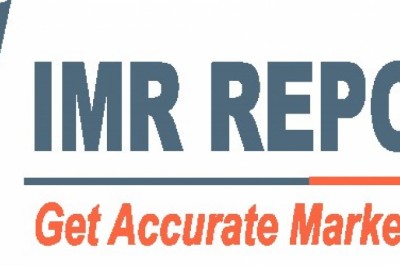views

Managing small business finances is crucial to the survival and growth of the business. Whether you have been running a business for many years or are starting a new venture, managing financial processes using traditional paper-based systems can demand considerable effort from your finance teams. Recordkeeping using legacy systems can also be challenging, leading to potential cash flow bottlenecks due to lack of performance. Efficient processes are needed in 2024 as they can help you see a clear snapshot of your finance objectives while empowering you to make proactive decisions by identifying issues before they appear. If you want to improve financial management systems, streamlining your company’s finances can help you accelerate your cash flow.
Why Small Businesses Should Streamline Financial Operations
Relying on disjointed systems and hiring accountants to manage financial operations and bookkeeping requires manual efforts. Your accountants must be trained to perform effectively to ensure the smooth running of financial operations. Collecting accounts receivable (A/R) practices are required to be efficient in sustaining the cash flow. However, desk-to-desk movement of paper-based invoices and documents slows down the processes. Lost or erroneous invoices compound the delays, which ultimately affects your organization’s bottom line.
Implementing an efficient system with an automation solution can help you streamline workflows and ensure digital recordkeeping that can be retrieved as needed. This can allow the finance teams to track invoices on the platform’s dashboard without the need for manual intervention. The benefits of automation solutions extend from improving A/R collections to automatic reconciliation of payments, keeping your ledger consistent. With automation, you can unlock your cash flow while improving the productivity of your finance teams to maintain the working capital of the organization.
4 Best Practices to Manage Small Business Finances in 2024
Entering 2024, here are four best practices to consider that can reduce financial risks while improving the business finances of small business owners.
1. Draw a Wage for Your Efforts
Many entrepreneurs and small business owners put all their earnings into the business without compensating themselves for their hard work and efforts. Though it can be tempting to invest your savings, not paying yourself can be a mistake. By withdrawing a salary for yourself, you can keep your financial needs in good shape.
There are many factors you can consider to draw the amount on salary. Those factors include the net income of the business, personal expenses, the industry’s average salary, company size, and taxes, among others. This can vary in the region where you belong, so explore the factors so you can pay yourself a reasonable account without taking away investments.
2. Capitalize on Loan Availability
Taking a loan is not intended to ensure the survival of the business. A business can consider taking a loan for an urgent cash injection to upscale the business operations with a significant return on investments. Drawing loans as a small business can help you expand your business and seize the opportunity that can accelerate any area of your business, including marketing, inventory, technology, or others.
While considering taking a loan, thoroughly research the availability of a loan with the best credit terms so you can return without penalty. A loan from a source with good interest rates will be better for your business.
3. Maintain a Good Credit Rating
Getting a loan as a small business owner is challenging. Many financial institutions do not fund small businesses due to the insignificant investment returns. Keeping a good credit score can help you get financial assistance in the future to keep your business afloat. Therefore, you must pay the loan back regularly when approved to avoid penalties and maintain a good credit score. Though the banks can support small businesses to manage their credit correctly, it varies from country to country. Nevertheless, the following practices are crucial to maintain a good credit score.
- Using a business account while applying for the loan.
- Repaying loan installments before the deadlines.
- Consider taking a small amount of loan to make it easier to pay off.
- Ensuring compliance with the taxation laws of the region.
- Paying a higher amount than the minimum loan installment due for repayment.
Considering the above tips, you can maintain a solid credit history for your business. Not only does it make it easier for you to secure loans, but it also opens up the opportunity to purchase commercial properties and acquire more comprehensive insurance policies. When seeking financing, having a solid credit record can help you negotiate better terms with lenders. In addition, a good credit score indicates financial stability, which can set you up for success in various aspects of business management.
4. Implementing a Smart Accounts Receivable Collection Strategy
Invoicing customers and creating an efficient billing strategy is challenging to achieve through manual processes. Errors in bills, invoices, and inaccurate financial records can affect the financial decisions of your organization while also posing risks to your organization’s financial health. By implementing AR automation for small businesses, you can streamline entire invoicing, collections, and communication process workflows.
Using an automation solution can help making your processes efficient, free from errors and reducing manual touches for smoother invoice-to-cash cycle. With its integration, you can connect with your existing ERP or accounting software to sync invoices, delivery notes, taxes, customer information, and other details. You can track the entire workflow and take proactive actions to mitigate potential cash flow issues.
Customers can also benefit from automation by optimizing payment collections through electronic payment methods. This ensures frictionless payment journeys for customers where they can pay using their preferred mode of payment. For the business, they can collect cash online without waiting for a check received by mail. This leads to another significant benefit of automation for small businesses, which is that they can reduce financial risks while improving the overall financial health of your business.
Final Words
Operating a small business requires sustained cash flow working capital and an efficient system to secure the financial health of your business. By optimizing your financial processes with an automation solution, you can make your invoice-to-cash process efficient. Maintaining your credit score and capitalizing on loan availability can help secure your financial future and improve your organization’s bottom line. Remember to choose the automation software that effectively meets your business needs and makes financial management more accessible for small businesses.












